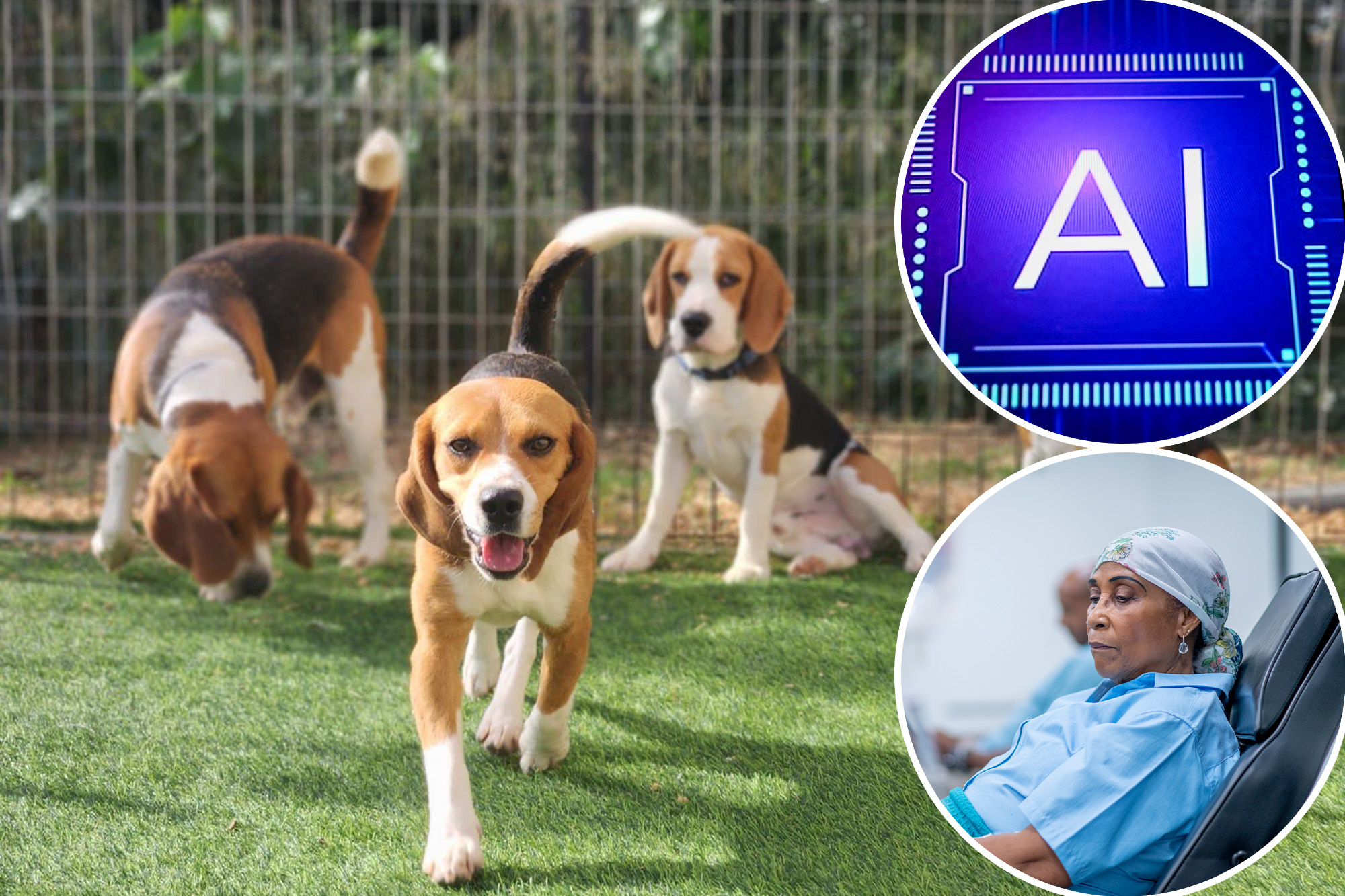
Howl-elujah!
You’ve been heard for sure that dogs can be trained to smell cancer.
Now, the start of Israel in a prominent way is using that extraordinary skill – along with the basic technology – to start the future weapon of medical secret.
The Biotechnical Company is conducting a revolutionary test of home cancer control that is a Pup Part, part it.
Here is how it works: you order a test that reaches your door, breathe in a high -tech mask that resembles a N95 for three minutes and post the sample in the spotaary lab.
There, a team of professionally trained dogs will give it a good smell – and if there is any cancer present, they will know.
Dogs our dogs are natural workers and love is mentally stimulated by their sense of smell. Their training to detect fragrances was not the challenge; It is in their nature, the posting Madar, CEO of Spotitearly, told them.
â € œ with about 250-300 million receptors, the feeling of smell of a dog is estimated to be between 10,000 to 100,000 times more sensitive than that of a man. This is what makes them very effective for aroma -based tasks, such as those in police forces or for detecting diseases in people.â €
According to Madar, dogs make their diagnosis by detecting cancer -wind signatures in a patient’s unstable organic compounds (VOC) – biological information from the blood in our lungs traveling in the air we promote.
No matter how incredible these super-snifers-fest-snifers are, true magic occurs when the dog’s intelligence meets artificial intelligence.
â € œas dogs detection is smelling samples in the laboratory, we use our owner platform AI, Lucid, to follow and analyze their physiological and behavioral signals, collecting thousands of data points per second, â € Madar explained.
â € Lucid will generate a positive lab result if a cancer signature is identified in a sample. This union of advanced technology with the extraordinary dog smell skills enables each sample to be examined in one part of a second, making the solution very scaled.â €
The goal is to distinguish cancers earlier, when they are easier and cheaper to treat.
â € œToo often, cancer diagnoses come very late, ”Madar said. Our goal is to reduce the diagnoses of cancer in the late and potentially fatal phase. The data are clear: when we detect cancer earlier, we significantly improve survival rates and results.â €
The test, which is in the development of the late phase, is expected to be released in 2026 with an estimated price of $ 250 .â
This is for the type of cancer, with packaged discounts for high cancer shows.
“We plan to work with health insurers to cover the test to reduce the financial burden on patients,” he said. â € œse it is made commercially available, this will be a high advantage for us.â €
In a recent clinical study, the method of controlling cancer in spots.
If it works, it can save you a trip to the doctor and an unpleasant procedure.
â € œThe individuals avoid routine cancer manifestations because they can be uncomfortable and invading, ”Madar said.
â € œ to simplify the process in a self-administered review test, where users simply breathe in a mask, [this] Levels that hinder and encourage more proactive testing.â €
Research has found that only 14% of cancers in the US have been diagnosed by a traditional examination test .â
While prominently not seeking to replace them, Madar said he wants to “diagnose diagnoses and ecosystem cancer, shifting him from care for the sick in true health care. “
Now “back to dogs.
The cubs work for several hours a day on the teams and they are rewarded with treatments and love.
When they are out of the clock, they take the time of outdoor play, abdominal friction and a lot of human attention.
And when they retire? They are adopted in loved ones – often by the people themselves who worked with them.
Dogs our dogs are not laboratory animals; They are really part of the prominent team, ”Madar said.
And while cancer is the advantage of now – especially as it is mysteriously growing of new people – Madar believes that technology can one day help smell other diseases as well, including Parkinsonâ and serious infections.
“We aim to make the early diagnosis the rate, consequently by increasing the chances of survival in the scale,” he said.
#home #test #detect #cancer #cubs #smell
Image Source : nypost.com